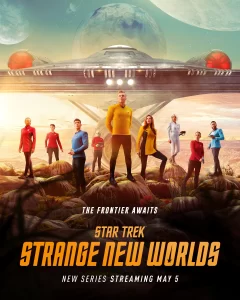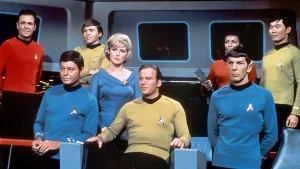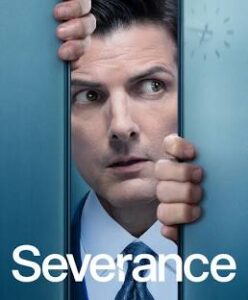.
Yesterday, while recovering from minor oral surgery, I watched a YouTube video from the channel ‘Feral Historian’ where he discussed the history of myths and their cultural command throughout human civilization, concluding with the observation that while Disney owns the intellectual property of Star Wars the myth of that franchise belongs to the wider American and even global culture. It is a very fine distinction that can ‘separate ownership’ from ‘belongs to’ but in my opinion his essay seemed to boil down to essentially, ‘Not my Luke Skywalker.’
It is a fairly common refrain that the character of Luke Skywalker as presented is strikingly at odds with how the character is in the original trilogy. That his fall and sulky isolation degrades his heroic stature and is an insult to the fanbase.
I don’t agree. In fact, I think there are signs and traits exhibited in the original trilogy that support the actions taken by Skywalker in The Last Jedi.

Disney/Lucasfilm
Luke started his journey to becoming a Jedi Knight driven by anger and a thirst for vengeance after discovering the charred corpses of his Aunt and Uncle. His first steps into that wider mystical existence were steps that often lead to the Dark Side. This is a small factor, Luke clearly tries to devote himself to the Rebellion and the fight for freedom, but it is an important emotional fact to keep in mind.
In The Empire Strikes Back it becomes clearer that the Dark Side of the Force holds an allure and draw to Luke just as it did for his father. (In either the original backstory presentation as told by Obi-Wan or in the retconned version of the prequels.) When confronted with a cave that is ‘strong with the Dark Side’ Luke is told by Yoda that he must confront it, and he should do so without his lightsaber.
He ignores the sage advice of his tutor, strapping on his weapon, and venturing into the lair of the Dark Side. There he is confronted by a vision of Darth Vader. There was the unmistakable sound of a lightsaber igniting, and Luke raised his weapon to fight. Only after Luke has lit his weapon does the image of Vader ignite his.
Luke, even after being told that hate and anger are paths to the Dark Side, starts the violence of the encounter. Defeating the image of Vader, it was revealed to be Luke under the mask, his real fight is and always had been with himself.
Luke, again ignores the counsel of his teachers, abandons his training to fly into a trap set by Vader and the Emperor in the Cloud City of Bespin. There he is maneuvered into a confrontation with the real Vader and having not learned the lesson of the cave, Luke starts aggressively, lighting his weapon first. Luke escaped but was bitter that he was not told what he thinks he should have known and not reprimanding himself for repeatedly ignoring the people wiser than himself in these matters.
The Return of the Jedi in addition to the space and ground battles represents Luke’s final temptation by the Dark Side and he starts the story off in a bad place. Setting aside the elaborate and knowingly doomed attempts to make a deal with Jabba the Hutt, when Luke enters Jabba’s palace his very first action, though difficult to see due to the bulky costumes, is to force choke the Gammorrean guards and reserve the ‘Jedi Mind Trick’ for the majordomo. While there are no on-screen fatalities from the choking it is quite reminiscent of the scene from the original Star Wars when Vader is simply annoyed by an Imperial Officer.
Luke displayed a fair amount of control as the Emperor pushed, prodded, and tempted Luke to give in emotionally to the Dark Side as the Rebel forces are being destroyed in the battle of the Second Death Star but eventually Luke did break, seizing his weapon, and giving in to his anger. He briefly regained his calm but only until, again unable to control his emotional nature, it is revealed he has a twin sister and all of Luke’s composure vanishes.
He is very nearly turned to the Dark Side with only the image of his father’s mechanical, hand so much like Luke’s own, shattered the rage that had propelled him, allowing him to accept death rather than be seduced by the Dark Side. Luke did not get to that moment of serenity quickly or easily. He is an emotionally volatile man, given to storm changes in his mood, demons that have been present throughout the character’s arc.
Which brings us to The Last Jedi and its Rashomon-like backstory of Luke and that night with Ben Solo.
Luke, sensing a Dark Side power he had not encountered since Vader, nearly twenty years earlier, reacts as he has always done when suddenly confronted in this manner, ignites his lightsaber. It is a moment of fear and weakness, but a moment was all that was required to destroy the future. Luke did not strike, but before he could take any further action, Ben awoke, and the die was cast for both their fates. Luke, always a person short on patience and given to grand gestures, flees in the face of his failure.
Here it is important to remember that Luke is also older than he was when he confronted his own failings. When one is young it is much easier to ‘pick yourself up’ and start over. There is an air of limitless possibility and invulnerability to youth but as you age you become more cautious, you feel the failures more painfully, and you are so much more aware that time is closing off all those limitless possibilities of youth. The idea that Luke flees, hides his failure and his shame from everyone else, wallowing in self-hatred for what he has done, is wholly in character with the young man I met on the silver screen in 1977.
He may not be ‘your Luke Skywalker’ and any honest critique cannot be wrong, but he is not divergent.






